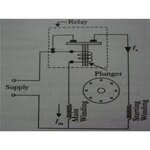bobbybobby
Newbie level 3
Hello!
I want to add a mains socket to a vacuum cleaner so that when the device connected to it (a drill, sander, electric saw, whatever) is powered the vacuum cleaner also turns on. I googled a bit and read some about current transformers but wouldn't a simpler solution be to use an AC controlled relay? For instance something like this:
**broken link removed** (there are probably better candidates but this was the first one to turn up that seems to be able to be controlled by AC)
Connecting the relay coil in series with the external socket would close the relay and thus send current through it to the vacuum cleaner when a device is turned on.. this should at least work in theory I think? Any problems with this or are there better solutions? I want to avoid using a microcontroller for this project and I also want to keep it low budget.
Appreciate all answers!
I want to add a mains socket to a vacuum cleaner so that when the device connected to it (a drill, sander, electric saw, whatever) is powered the vacuum cleaner also turns on. I googled a bit and read some about current transformers but wouldn't a simpler solution be to use an AC controlled relay? For instance something like this:
**broken link removed** (there are probably better candidates but this was the first one to turn up that seems to be able to be controlled by AC)
Connecting the relay coil in series with the external socket would close the relay and thus send current through it to the vacuum cleaner when a device is turned on.. this should at least work in theory I think? Any problems with this or are there better solutions? I want to avoid using a microcontroller for this project and I also want to keep it low budget.
Appreciate all answers!

